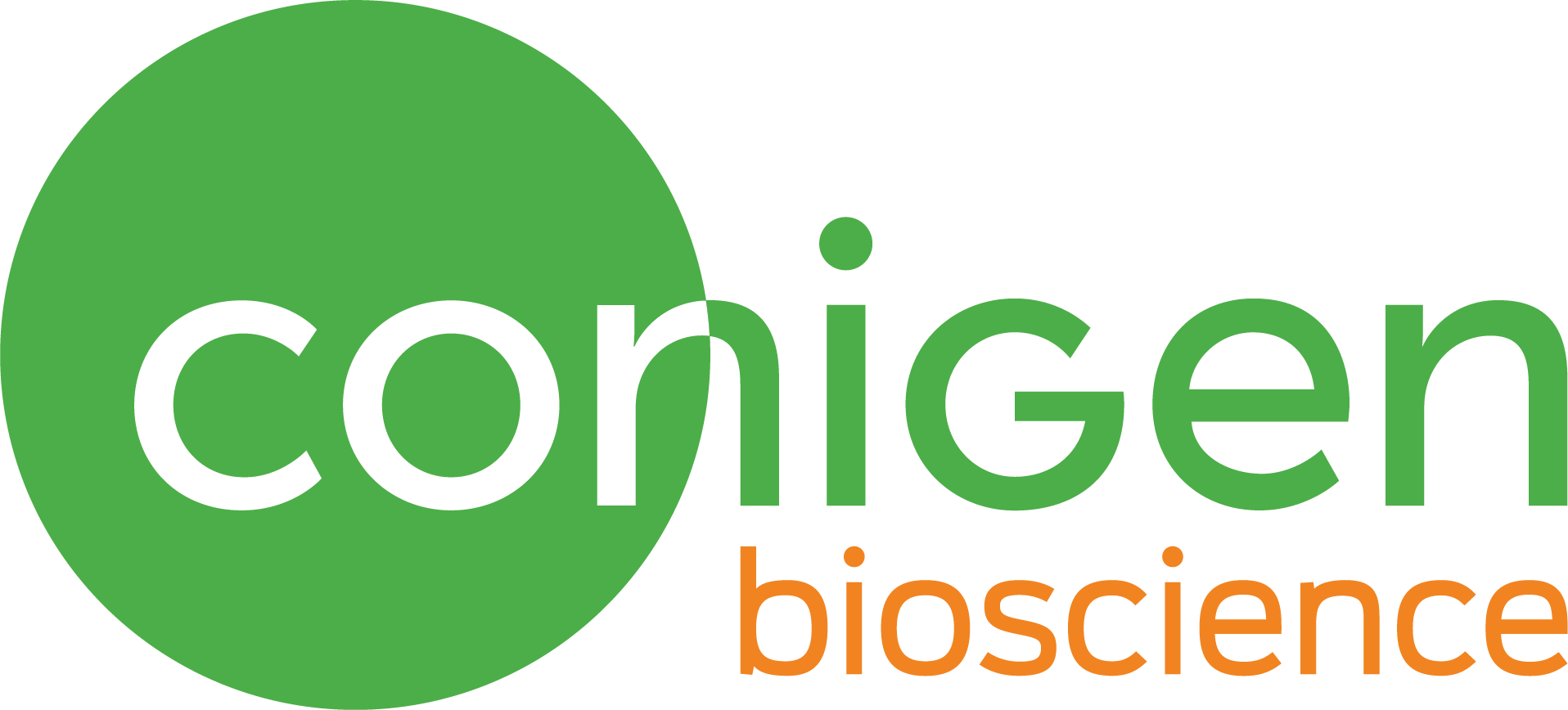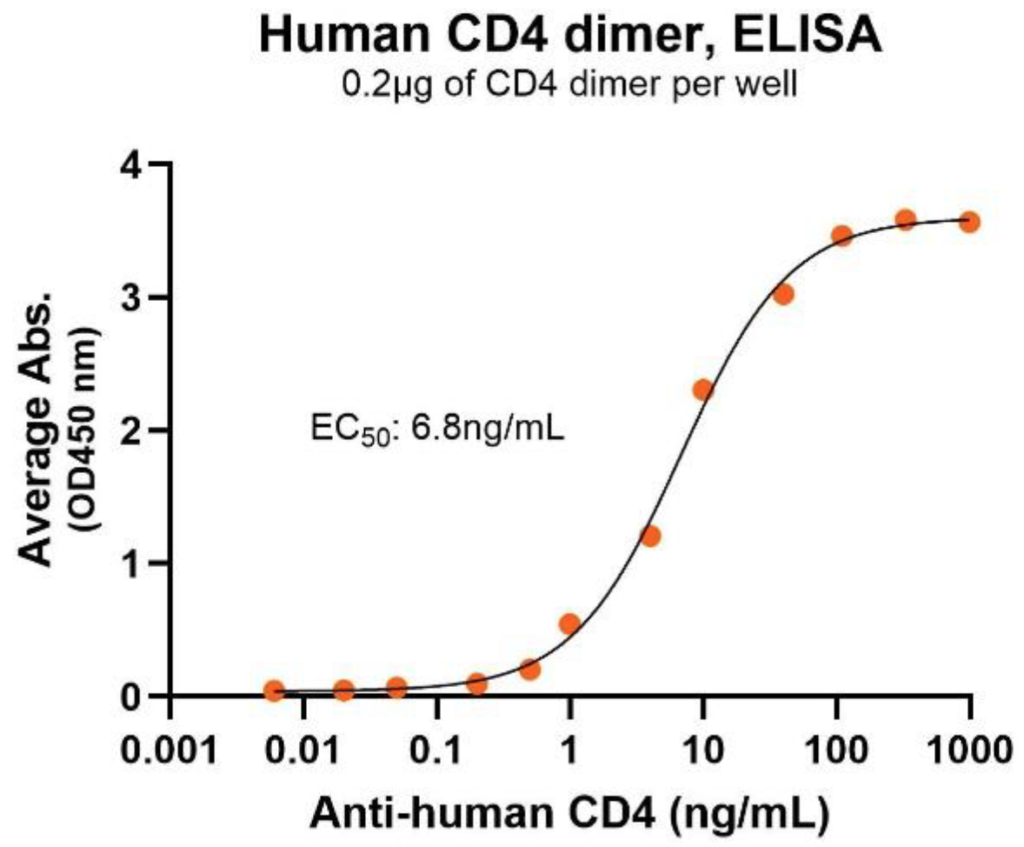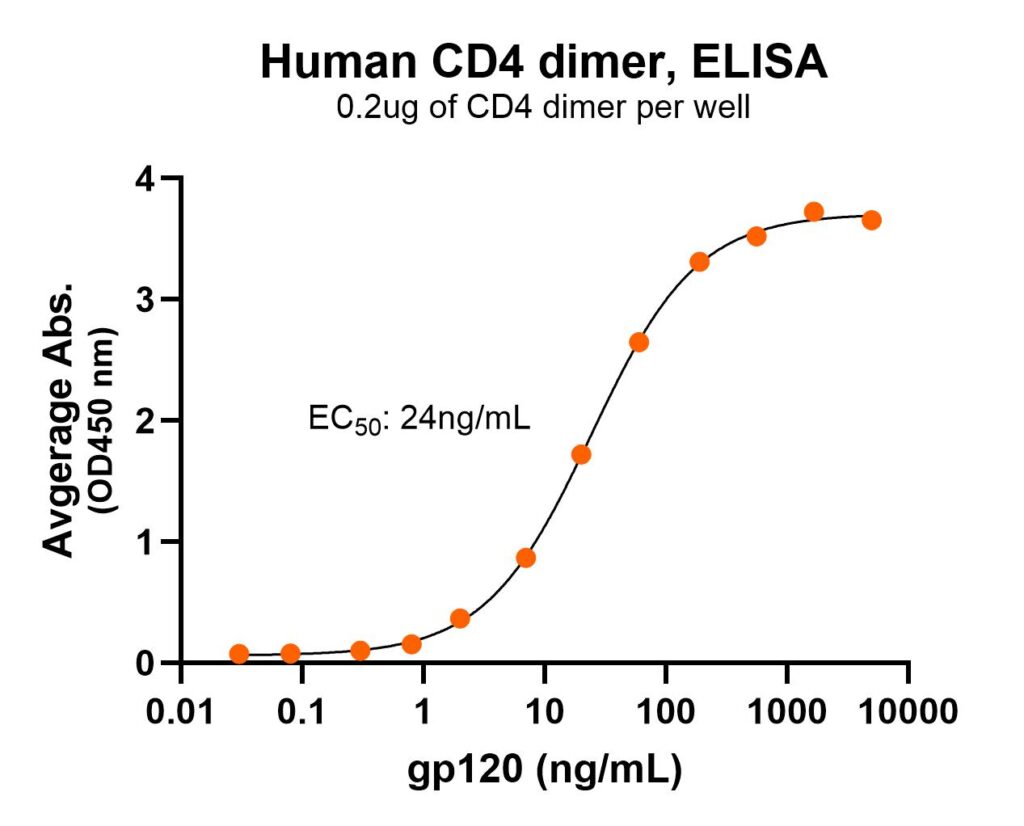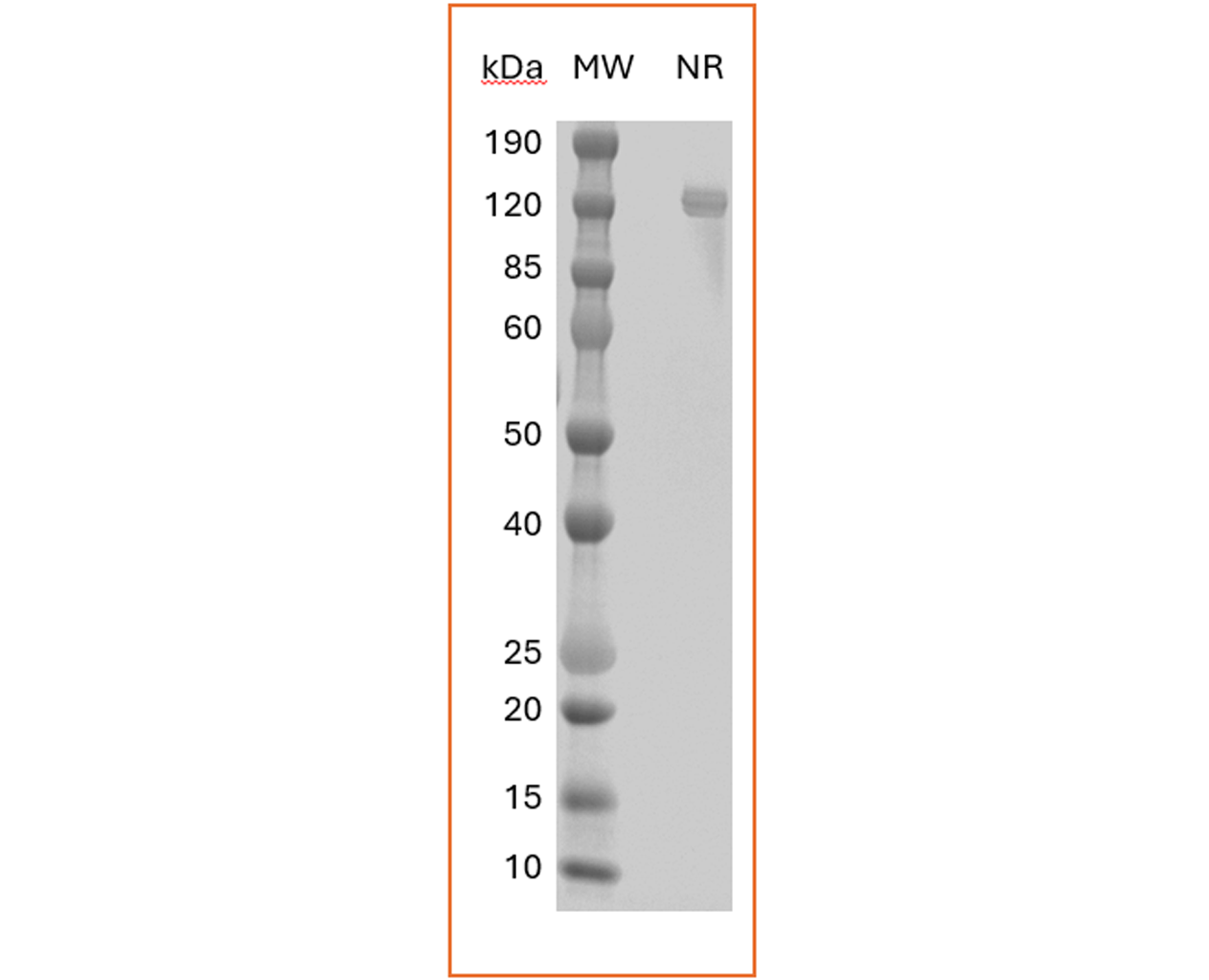Bioactive, Human CD4 Dimer, His tag
| Product Code | CSP-24004 |
| Expression Host | HEK293T |
| Verified Applications | ELISA for antibody binding and gp120 binding. |
| Suggested Applications | SPR binding measurements, B cell sorting, immunogen for animal immunization, RUO. |
| Purity | >90% dimer form as determined by SDS-PAGE non-reducing conditions |
| Amino Acid Range | Lys26-Phe396 |
For Research Use Only (RUO)
Price: $125.00
Price: $195.00
Price: $350.00
Price: $750.00
Price: $2,500.00
Anti-human CD4 Antibody Binding
Antibody binding (EC50 range of 3.46 – 13.85 ng/mL)
Specifications
Formulation: 0.2μm filtered PBS, pH 7.4, no preservatives
Shipping: Frozen Dry Ice
Storage: -80°C
Human CD4 protein is also known as IL16 receptor (IL16R). CD4 dimer (CSP-24004) contains CD4 extracellular 4-domains (amino acids Lys26- Phe396, UniProt# A0A4Y5UGE4) with a homodimer motif and a His tag at the C-terminus. This protein is expressed in HEK293 cells. The CD4 dimer protein is bioactive and can bind to HIV-1 envelope glycoproteins (Env) from various subtypes with on average >10-fold binding activity increases compared to CD4 monomer protein. The HIV-1 Env binding to CD4 dimer can be diminished by a D368R mutation. CD4 dimer also increases the binding to CD4-specific antibodies. This CD4 dimer can be used as an immunogen for animal immunization (RUO) and as an antigen for in vitro assays and antibody screening targeting more conformations epitopes.
Protein Name: Human CD4
UniProt #: A0A4Y5UGE4
Predicted Molecular Weight: 112 kDa
SDS PAGE Molecular Weight: Migration range of the dimer under non-reducing condition is 100-150kDa on SDS PAGE
Protein Construct: CD4 dimer contains CD4 extracellular 4-domains with a homodimer motif and a His tag at the C-terminus.
Background
CD4 is type 1 integral membrane glycoprotein protein on a T cell surface, also known as known as T-cell surface antigen T4/Leu-3. CD4 contains an extracellular domain, a transmembrane domain and a cytoplasmic domain. The extracellular domain has 4 immunoglobulin-like (Ig-like) domains: one Ig-like V-type domain and three Ig-like C2-type domains. The CD4 extracellular domain is responsible for MHC class-II antigen/T-cell receptor interaction and T cell activation. CD4 is also known as interleukin 16 receptor (IL16R). The IL16 cytokine binds CD4 to activate a downstream signalling cascade. CD4 is also the primary receptor for the human immunodeficiency virus (HIV) envelope glycoprotein gp120 to mediate HIV infection and entry into host T cells, as the underlying cause of acquired immune deficiency syndrome (AIDS).
Alternate Names: IL16R
Learn more about CD4

CD4: The Glycoprotein at the Heart of Immunity, HIV Research, and Clinical Advances
CD4, or “Cluster of Differentiation 4,” is a glycoprotein expressed on CD4+ T cells and also found on the surface of other immune cells such
FAQs
What is the Function of the CD4 Glycoprotein?
The primary function of CD4 is to act as a coreceptor in the immune response. It binds to MHC class II molecules, facilitating T-cell activation and cytokine release, which are critical for immune system signaling and pathogen response. The CD4+ T-cells help initiate antibody production by B-cells and activate cytotoxic T-cells, ensuring a coordinated immune defense. Learn more on our blog about CD4 »
What is CD4 a Marker For?
CD4 serves as a surface marker for CD4+ T cells, and its levels are used to assess immune health, especially in HIV/AIDS patients. HIV specifically targets and depletes CD4+ T-cells, leading to immune system failure. CD4 counts are vital in clinical settings to monitor HIV progression and guide antiretroviral therapy decisions. Learn more on our blog about CD4 »



